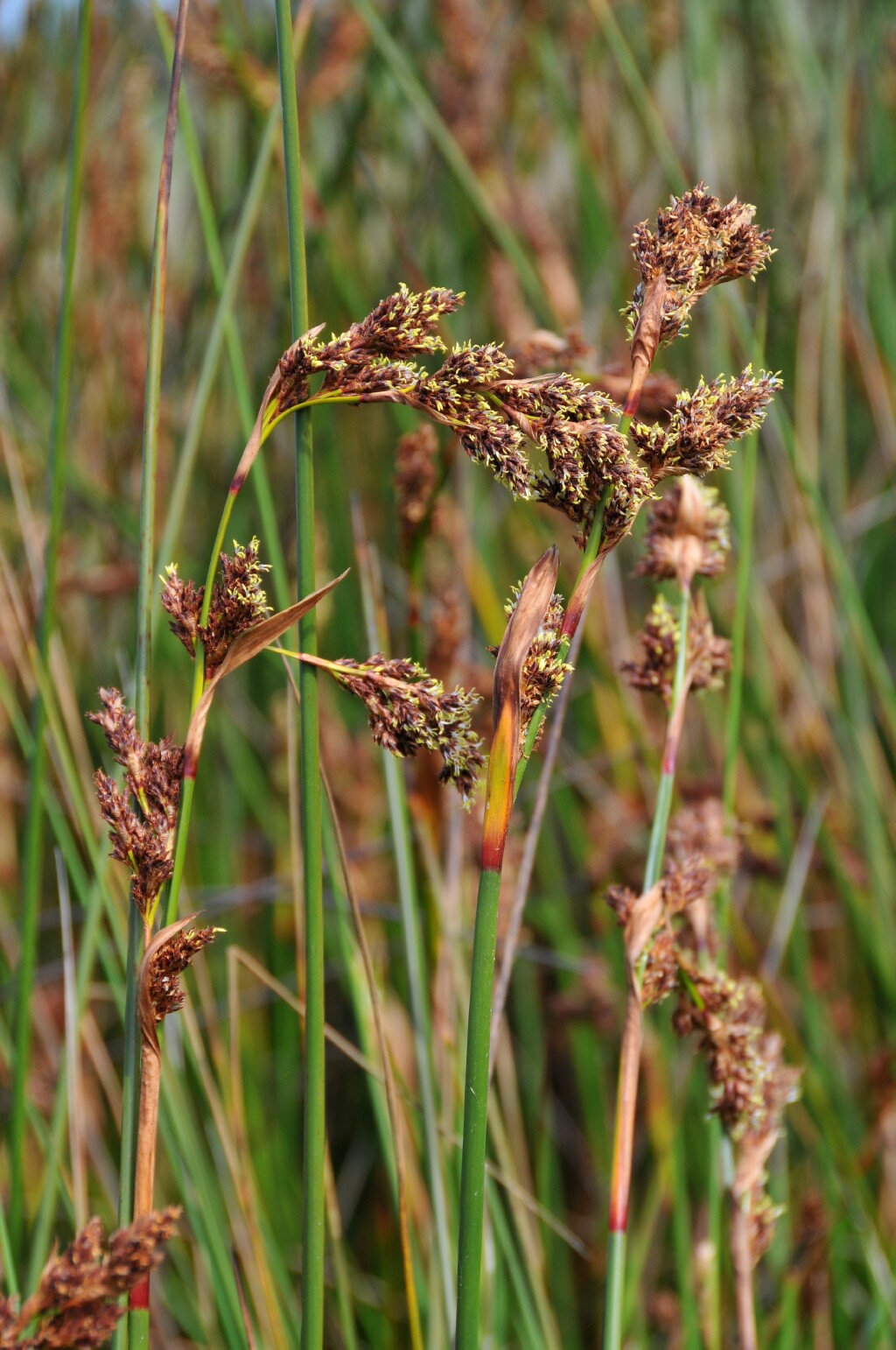Machaerina arthrophylla
(Nees) T.KoyamaPerennial with long rhizome. Culms rigid, terete or compressed, 1-noded, striate, glabrous, smooth, 30–130 cm high, 0.8–2.5(–5) mm diam. Leaves basal and cauline; basal blades terete, more or less transversely septate (not obvious externally when fresh), to 1.5(–8) mm diam., shorter than culms; cauline leaves much reduced; sheath reddish or straw-coloured, dull. Inflorescence interrupted-oblong in outline, narrow, erect, 8–55 cm long, 1.5–3 cm diam.; lowest involucral bract much shorter than inflorescence. Spikelets numerous, 2–4-flowered, 3.5–5.5 mm long; glumes 4 or 5, acute, with excurved mucro, mid to dark red-brown, margins ciliate; fertile glumes 3.0–4.5 mm long. Nut ellipsoid to ovoid, 3-angled, smooth with underlying reticulations, white-hispid at apex, ± shining, pale straw-coloured to whitish, 1.8–2.5 mm long, 0.9–1.3 mm diam. Flowers spring–summer.
LoM, MuM, Wim, GleP, Brid, VVP, GipP, OtP, WaP, CVU, GGr, DunT, EGL, EGU, WPro, HSF, HNF. All States. New Zealand. In freshwater swamps and lakes, sometimes growing in water to c. 1 m deep.
Commonly confused with M. rubiginosa, which has larger, less angular nuts, leaves and involucral bracts somewhat flattened at least near the apex, and more densely clustered spikelets.
Wilson, K.L. (1994). Cyperaceae. In: Walsh, N.G.; Entwisle, T.J., Flora of Victoria Vol. 2, Ferns and Allied Plants, Conifers and Monocotyledons, pp. 238–356. Inkata Press, Melbourne.
 Spinning
Spinning



